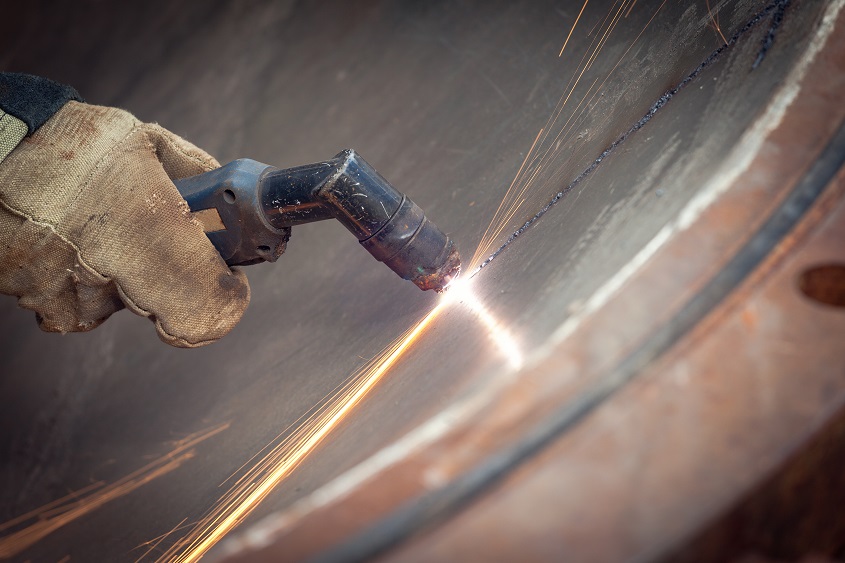Have you ever wondered what are the factors of duty cycle?
What causes duty cycle and what are the limitations? We are pleased to announce Andy from Workshopshed has prepared this quick Q&A to answer some main points,
Q: What is duty cycle?
A: Duty cycle is the number of minutes out of a 10-minute period a welder can operate, it is expressed as a percentage. So if the welder can run for 6 minutes out of 10 the duty cycle is 60%.
Q: What causes it?
A: The welder heats up due to inefficiencies in the circuits and coils. This heat is generated faster than it is dissipated. If left the welder would overheat so you would need to stop welding and allow the welder to recover.
Q: Can’t the designers of welding equipment do something about that?
A: Due to the high currents involved even a small inefficiency has a big effect. It is possible to introduce larger cables and clever electronics to reduce the heat generated, it is also possible to introduce cooling such as fans or improve the heat dissipation.
For example, the old Oxford Welders had oil cooled transformers to improve heat dissipation.
Q: So why aren’t welders made to run at 100% duty cycle?
A: Such changes increase costs and often increase weight. Adding extra electronics can also introduce reliability issues compared to simpler designs.
Q: So how do I select the right duty cycle for my application?
A: There are many factors but the main one is the characteristics of the job you are doing. If you are say, welding batches small components with a long setup time, then you should find that a low duty cycle is adequate.
However, if you are welding a long seam then you may need a higher duty cycle.
Also, if your time is very valuable, say for example you are underwater welding, then it is essential to have the highest duty cycle you can afford so you don’t waste time.
Q: If I am welding thinner materials with a lower current, how does that affect duty cycle?
A: If you are purchasing a professional or industrial welder the supplier may provide a chart that indicates the expected duty cycle for the selected current output, alternatively you may have values quoted for 100% and 60% duty.
The chart below shows that this machine can run at 100% on DC if you stick below 65A but that falls to 20% if you are welding at 160A.
Q: What other factors affect what I would achieve.
A: If you read the small print, you will see that the values given are for a particular “ambient temperature” so if in a warmer climate then your duty cycle will be reduced.
You will also see a reduction if you are in an enclosed space as the heat will not be able to dissipate from the welder.
The line input voltage can also affect the duty cycle with lower voltages reducing the duty cycle.
So, if you are working on an unreliable supply or say from an under-rated generator you may experience issues.
Unfortunately for beginners your technique can also affect results.
If you are using a wide arc or a long distance between the torch and material then that will take more power from the welder and hence reduce duty cycle, it will also heat up your work and may cause distortion.
Very long welding cables may introduce a voltage drop and which in turn would require you to use more power for the same current requirement.
Q: So, once I’ve selected my welder, that’s all I need to worry about?
A: Unfortunately not! All of the welding equipment you are using needs to be rated with the same or better duty cycle as your welder such as cables, torch, wire feed motor and water cooling.
Great summary on this never-ending subject!
So if you have any questions or would like to contact us on any of your requirements, don’t forget to comment!
Got any questions about us? View our FAQ page on the website…..
A huge thank you to Andy, you can see more from him and his Workshopshed Blog here – http://www.workshopshed.com/


comments
will welding affect the spine .can the arc damage the nerves .in your neck i am a x car body builder.
i just did not put my self foreword a nuff to be a top welder.out of it now.god i loved my job.
you no it s art.in the 70 s the French welded the UK gas pipes .they wear top welders.
i had the had a job for 6 month just handing the rods to them.the oil cooler welders wear
lifted in to plays some wear on tracks as the wear that heave to move by hand.
something you must never do is spend a lot of time consents welding finish and back of for a short
time.give you brain a rest and neck.wear good lenses .i just a pity we did not have computer type
in my days but they did come about.and boy there good i still weld a little and have good helmet
that you stick on your head not hold like we did.to hands with good gloves is a god send.
from john in carlisle uk.thank peter.
Pingback: Roundup of the year 2012 - Workshopshed
Pingback: Hobby Welding and Duty Cycle | Workshopshed
Pingback: Roundup of the year 2012 | Workshopshed